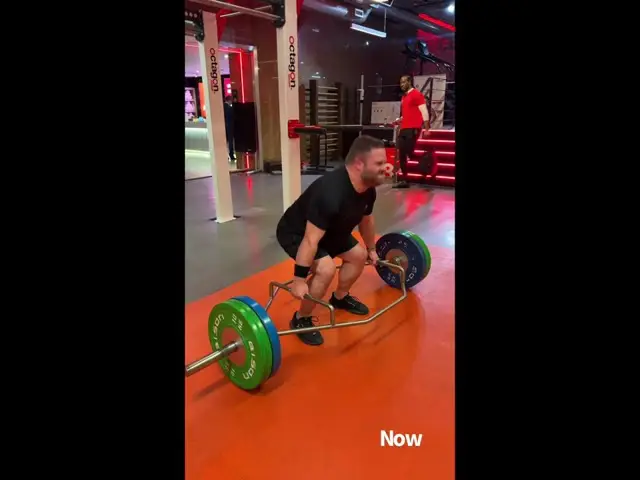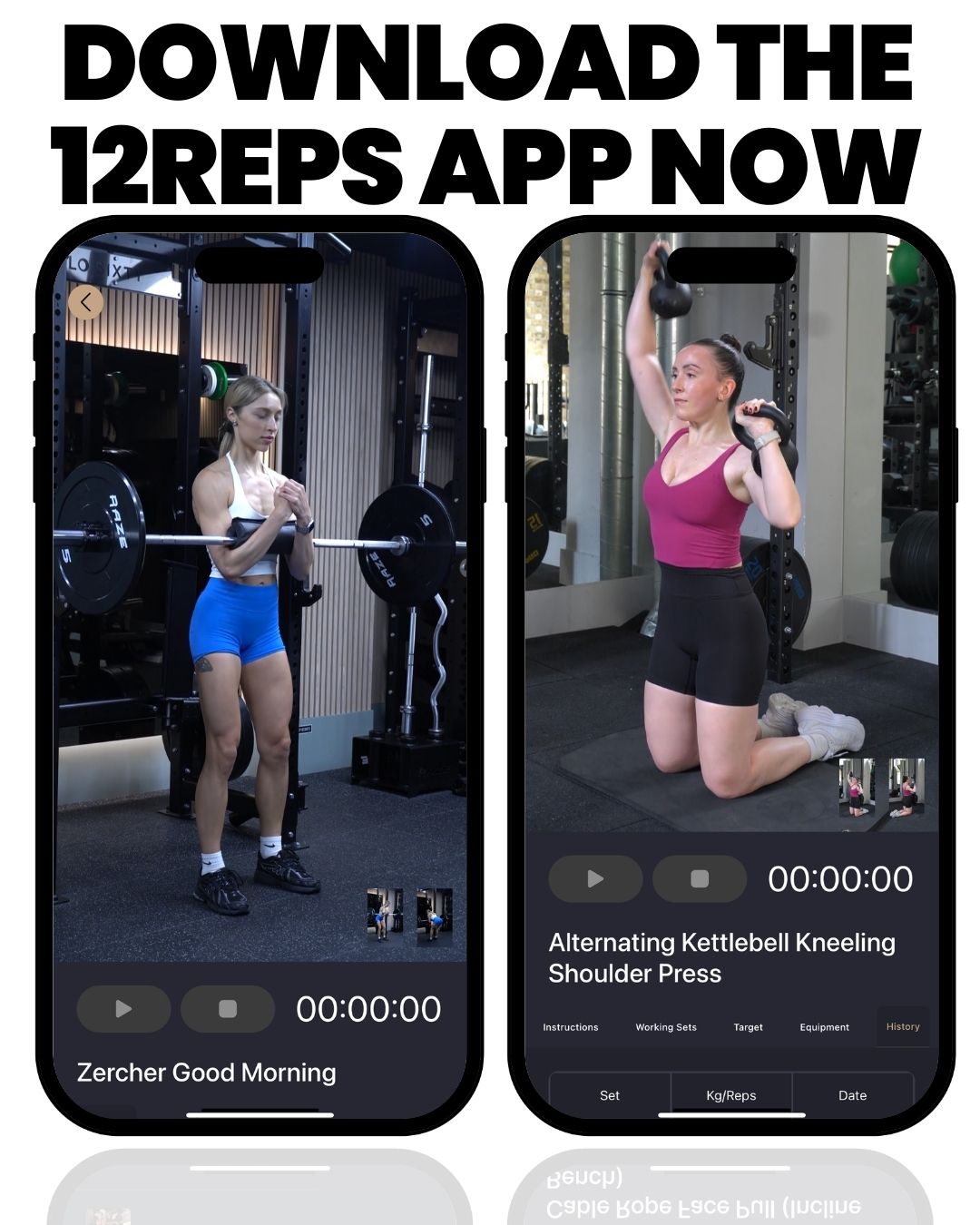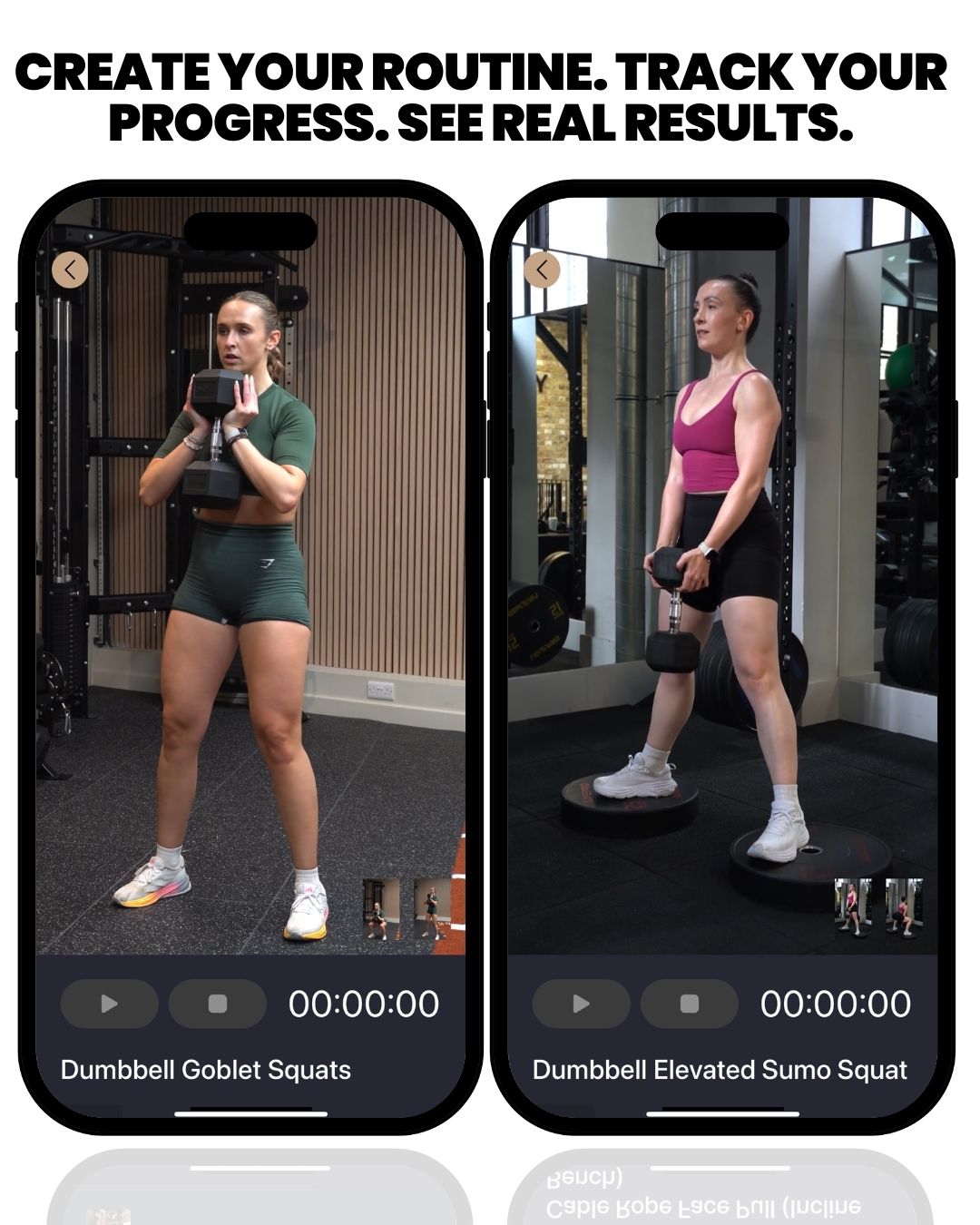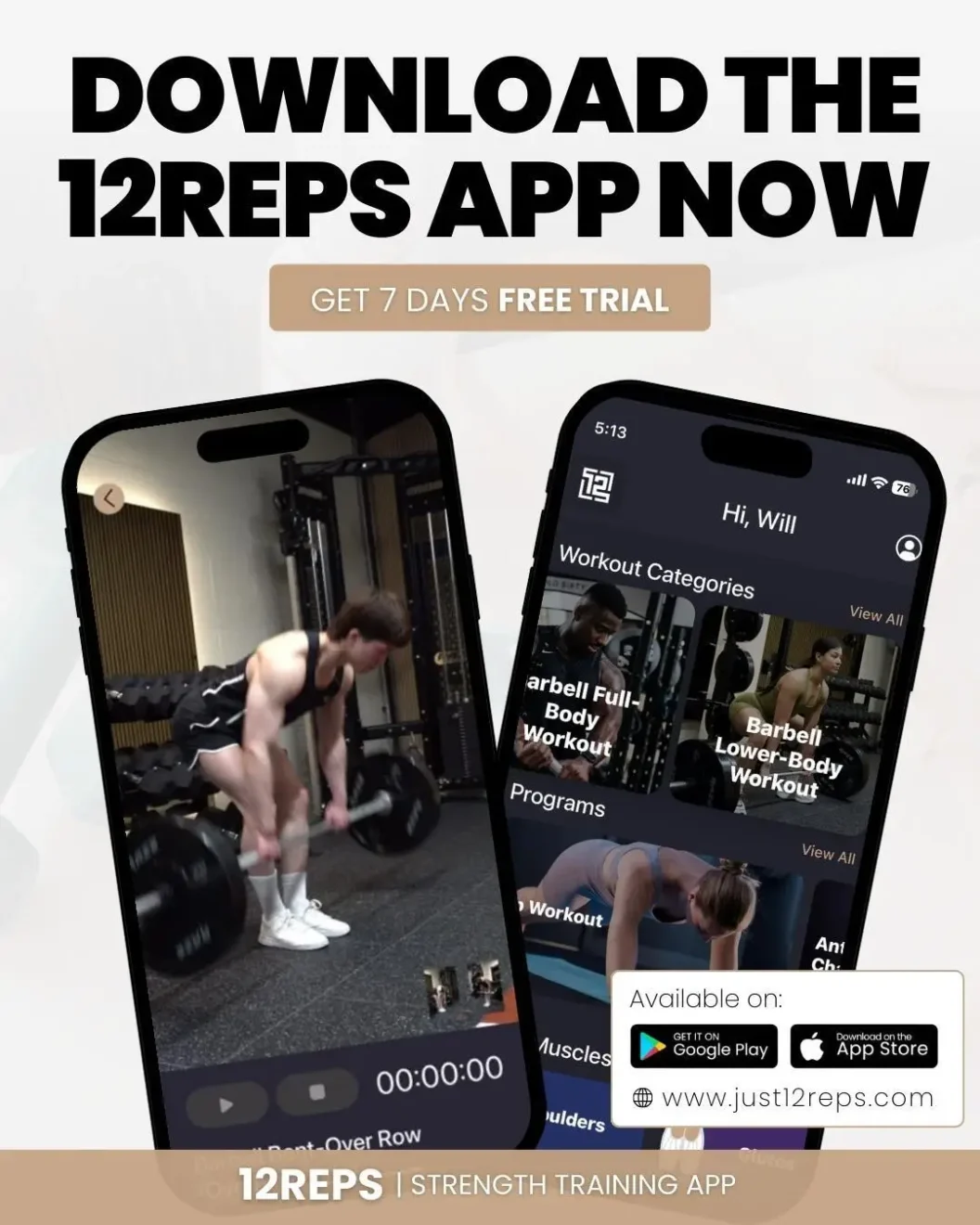By Will Duru, BSc (Hons) Sport and Exercise Science, Award-winning Personal Trainer with over 10 years of experience in strength training and optimising recovery
I’ve been a personal trainer for over 10 years. In this article, I want to share the inspiring journey of my client Edward, a Forty-something professional who transformed his body and health. When I first met Edward, he was struggling with his weight (he was 25 kg overweight) and feeling stuck. Years of sedentary habits had left him with low energy, less muscle tone, and concerns about loose skin. He wanted to lose fat, gain lean muscle, and tighten up, but he didn’t know where to start.
The Challenge: Edward had tried generic gym routines before but struggled with consistency and didn’t see much progress. He felt overwhelmed by conflicting fitness advice. At age 45 (an age where fitness can feel intimidating), he was also worried about injuries and whether strength training was “too late” for him. What Edward needed was a clear plan, accountability, and a sustainable approach to exercise and nutrition.
That’s when I introduced Edward to the 12REPS strength training app and combined it with one-on-one boxing sessions. This powerful combo of smart strength programming and fun cardio boxing would change his life. Let’s dive into how Edward lost 25 kg while gaining muscle, and how we addressed everything from progressive overload in the gym to a balanced diet at the dinner table.
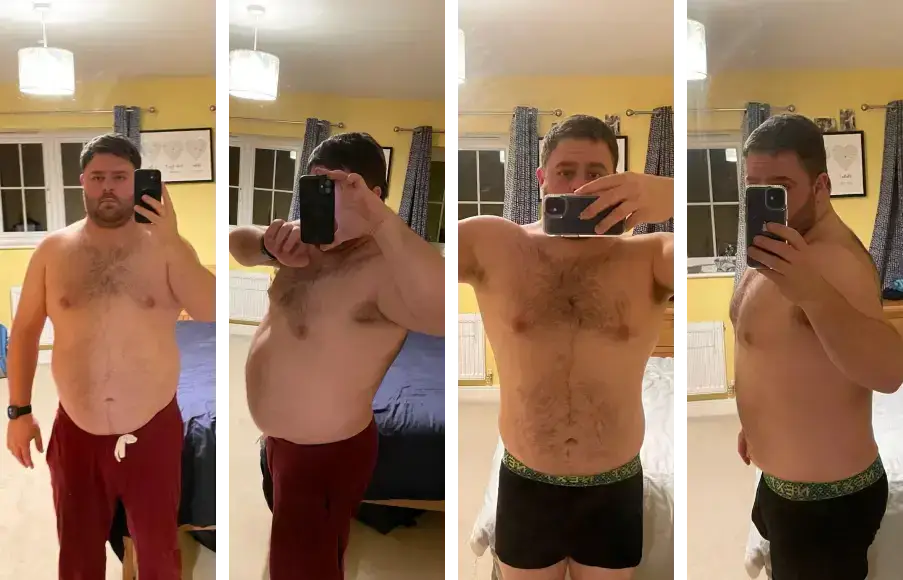
The Plan – 12REPS App + Personal Training (Boxing)
Customised Strength Training: I started Edward on the 12REPS app, which became our blueprint for his strength workouts. The app built a personalised program tailored to Edward’s goals (muscle gain and fat loss) and his beginner fitness level. It considered the equipment he had access to and any limitations. This meant Edward always knew which exercises, how many reps, and what weight to use each session. The guesswork was gone. As a trainer, I love that 12REPS plans are based on solid science, focusing on moderate rep ranges (around 8–12 reps) that are ideal for building muscle for both men and women. The app’s smart progress tracking showed Edward exactly when to increase the weight or reps, implementing the principle of progressive overload in a safe, structured way. (In fact, the 12REPS app was designed to help users continuously challenge their muscles; its tracking features basically guarantee you keep improving and avoid plateaus by steadily lifting a bit more over time .) Seeing his numbers go up each week kept Edward motivated and accountable.
One-to-One Boxing Sessions: In addition to weight training, I worked with Edward in weekly boxing sessions. Boxing became a fun cardio outlet for him; it torches calories, improves coordination, and relieves stress. We scheduled boxing on separate days from his heavy lifting. A typical week for Edward looked like this: three strength-training workouts using the 12REPS plan (e.g. Monday, Wednesday, Friday), and two boxing sessions (Tuesday and Saturday) for conditioning. By integrating boxing, we kept his program exciting and well-rounded.
Importantly, we structured the training so that the cardio enhanced his results rather than hindered them. High-intensity boxing complemented his strength training by improving his cardiovascular fitness and helping burn extra fat, all without “killing his gains.” In fact, I’ve found that moderate-intensity 8–12 rep weight training in 12REPS pairs very well with short, intense cardio sessions; you can build muscle and improve endurance simultaneously if you balance them right. Edward would lift before cardio on combo days, or on separate days entirely, ensuring he had full strength for the weights and used boxing mainly as a fat-burning finisher. This strategy allowed his strength to increase week after week while still shedding fat, truly the best of both worlds.
Mindset and Consistency: From day one, I emphasised to Edward that consistency would trump perfection. We set small, attainable goals each week, like adding one more rep or improving form on each exercise. The 12REPS app was great here because it not only tracked his workouts but also gave encouraging feedback through progress charts. Every workout logged was a win. Over time, those small wins accumulated into big results. Edward began to enjoy the process – he loved seeing his improvements in the app and feeling himself getting stronger on the boxing pads. This mindset shift, focusing on progress rather than just the end goal, kept him going even when his motivation dipped. It’s a strategy I use with all my clients: make the journey enjoyable and trackable. As Edward saw his strength and fitness improve, working out became habit instead of a chore.
Progressive Overload – The Key to Muscle and Strength
A cornerstone of Edward’s transformation was the concept of progressive overload. If you’re not familiar with the term, progressive overload means gradually making your workouts more challenging over time, for instance, by lifting a bit heavier, doing an extra rep, or shortening rest periods. This principle is essential for gaining strength and lean muscle. Our bodies are amazingly adaptable; to keep improving, we must continually up the challenge so the muscles have a reason to grow stronger.
For Edward, we applied progressive overload primarily by increasing the weight on his exercises whenever he hit the top of his rep range. The 12REPS app made this straightforward. For example, if his program called for 8–12 reps and he managed 12 reps at a certain weight with good form, the app would prompt him next time to move up to a slightly heavier weight for that exercise. In practice, this meant Edward was adding about 1–2 kg to his lifts every week or two on key movements. Those small increases added up significantly over the months.
We also varied the reps and sets strategically. On some weeks, I’d have Edward attempt an extra rep on each set if he felt strong. On other weeks (especially after a few hard weeks), we’d dial back a bit to let his body recover. This is called deloading, and it’s important for preventing overtraining. But then we’d ramp up again, often surpassing his previous bests. This cyclical approach of push and recover kept Edward on a steady upward trend.
Tracking Progress: A huge factor in making progressive overload work is tracking what you do. Edward diligently logged every set and rep in the app. By reviewing his history, we could clearly see when it was time to push harder. The app would highlight PRs (personal records) and show graphs of his lifting volume climbing. This visual feedback was rewarding – Edward could literally see the line going up as he got stronger. Research and my own experience agree that “what gets measured gets managed.” Since Edward measured his workouts, we managed to progressively overload almost every week. According to one 12Reps blog article, having concrete data from each workout helps lifters continually apply progressive overload, guaranteeing ongoing improvement and preventing plateaus. Edward’s results certainly proved that true.
Even beyond the app, progressive overload became a fun challenge for Edward. He started saying things like, “Last week I benched 60 kg for 10 reps, I bet I can do 11 today,” or “I think I’m ready to try 65 kg next session.” This mindset of constantly challenging himself was night and day from his old approach of doing the same random routine every time. It’s also worth noting that progressive overload isn’t just about lifting heavier; some weeks, we focused on improving technique (better form, fuller range of motion), which also increases the effective stimulus on the muscle. Other times, we shortened his rest intervals slightly to make the same weight feel harder. There are many ways to progressively overload the muscles, and we utilised a variety, keeping Edward’s body guessing and adapting.
Adapting for a 40+ Body: Because Edward is in his 40s, we took a joint-friendly approach to progressive overload. Tendons and joints can be a bit less forgiving with age, especially for a beginner. So we prioritised proper form and controlled tempo over sheer weight. For instance, Edward learned to do each rep with a 2-second lowering phase and avoid any “ego lifting.” If an increase in weight caused his form to break down, we would hold off and focus on form mastery at the current weight first. This ensured that his progressive increases were sustainable and safe. I also incorporated extra warm-up sets (to lubricate the joints) and made sure he had at least 48 hours between hitting the same muscle groups for recovery. The result: in over a year of training, Edward did not suffer a single injury. Progressive overload done correctly shouldn’t be reckless; it’s a gradual, methodical process. Edward’s success – 25 kg weight loss and significant strength gain – came without any setbacks, which is a huge win for a client in his 40s.
Heavy Lifting for Everyone: One point I always stress to Edward and all my clients is that lifting challenging weights is not just for young guys or bodybuilders. It’s for everyone. I work with many female clients as well, and I encourage them to push themselves with resistance training just like Edward did. Women in their 40s and beyond often fear lifting heavy, but the truth is it helps them burn fat and build lean muscle without getting “bulky.” In fact, science shows the same moderate rep range (8–12 reps) and progressive overload approach works wonders for women’s physiques – not endless reps with tiny “toning” weights, but real challenging weight that makes the last few reps hard.
I’ve seen my female clients get stronger, leaner, and more confident by embracing this style of training. A bonus, especially for older women, is improved bone density. Progressive strength training signals bones to adapt and get stronger over time, which is vital for preventing osteoporosis. The bottom line: don’t be afraid to lift! Edward’s journey was about gradually lifting heavier weights to transform his body, and the same principle applies regardless of gender or age. Strength training, done appropriately, truly is the fountain of youth in fitness.
Edward’s Workout Routine – Sample Plan
Edward’s training split was built around three full-body strength workouts per week using the 12REPS app program, plus his boxing sessions. Below is an example of one of his full-body workout days from early in the program. Each exercise includes a warm-up and then four working sets of 8–12 reps. The exercises chosen are beginner-friendly (great for ages 40+ with no prior lifting experience) but still effective for building strength. We focused on compound movements that recruit multiple muscle groups to maximise calorie burn and muscle gain.
Key: RPE = Rating of Perceived Exertion (effort level, 10 is max). Rest = rest between working sets.
Exercise | Warm-Up | Working Sets | Reps per Set | Rest | Intensity (RPE) |
Bodyweight Squats (to warm up legs) | 1 × 15 slow reps (no weight) | N/A (warm-up only) | – | 30 sec | Easy (Loosen up hips/knees) |
Leg Press (or Goblet Squat) | 1 × 12 light weight | 4 sets | 8–12 | 90 sec | Moderate (About 7/10 effort) |
Machine Chest Press (or Dumbbell Chest Press) | 1 × 12 light | 4 sets | 8–12 | 90 sec | Moderate (last reps hard, ~8/10 RPE) |
Lat Pulldown (back exercise) | 1 × 10 light weight | 4 sets | 10–12 | 90 sec | Moderate (focus on form) |
Seated Row (cable or machine) | Use pulldown warm-up | 4 sets | 8–12 | 90 sec | Moderate (squeeze shoulder blades) |
Dumbbell Shoulder Press | 1 × 8 light per arm | 4 sets | 8–10 | 90 sec | Moderate (control the weight) |
Plank (core stability) | N/A | 3 sets | 30–45 sec hold | 60 sec | Challenging (tight core, ~8/10) |
About This Workout: We always began with a dynamic warm-up (not fully shown in table) – e.g. 5 minutes of brisk rowing or cycling, plus some mobility drills for shoulders, hips, and spine. Then for the first big compound exercise (like leg press), Edward did a warm-up set to groove the movement and prepare his muscles. Each working set was done with a weight that made the last few reps challenging (around RPE 7–8, meaning he had maybe 2–3 reps left “in the tank” at most). If he could easily do 12+ reps, we increased the weight next time. Between sets, Edward took about 1–1.5 minutes rest to catch his breath and allow partial recovery. This kept the workout intensity high but manageable.
We picked joint-friendly exercises, such as a leg press or goblet squat, which are easier on the lower back and knees for a beginner compared to a heavy barbell back squat. Similarly, machine chest presses and seated rows support the body and reduce injury risk while still strengthening the major upper body muscles. Over time, as Edward became stronger and more confident, we introduced variations like barbell deadlifts and bench presses, but only after he had established a solid foundation with the safer alternatives. By week 8–12 of training, he was comfortably doing those classic lifts (with excellent form) as part of his routine.
Progressive Overload in Action: Notice the rep range of 8–12 for most exercises. If Edward hit 12 reps on all his sets of, say, the lat pulldown at a given weight, in the next workout, the app would prompt him to increase the weight by a small amount (e.g., +2.5 kg) and start again, perhaps around 8 reps at the new weight. This way, the muscles were constantly challenged to adapt. Every few weeks, the exercises in the app might also rotate slightly to keep things fresh (for instance, swapping in a leg curl for hamstrings or a different chest exercise), while sticking to the overall full-body structure. But the core principle remained: challenge the muscle, recover, then challenge it a bit more next time.
Edward followed this plan diligently. He trained three days a week on non-consecutive days, allowing for ample recovery (key for a trainee over 40). On off-days from weights, he would do his boxing sessions or light activities, such as walking, to aid recovery. The combination of strength training to build muscle and boxing cardio to accelerate fat loss worked brilliantly. Each modality supported the other; lifting made him a more powerful puncher, and boxing improved his endurance for long gym sessions.
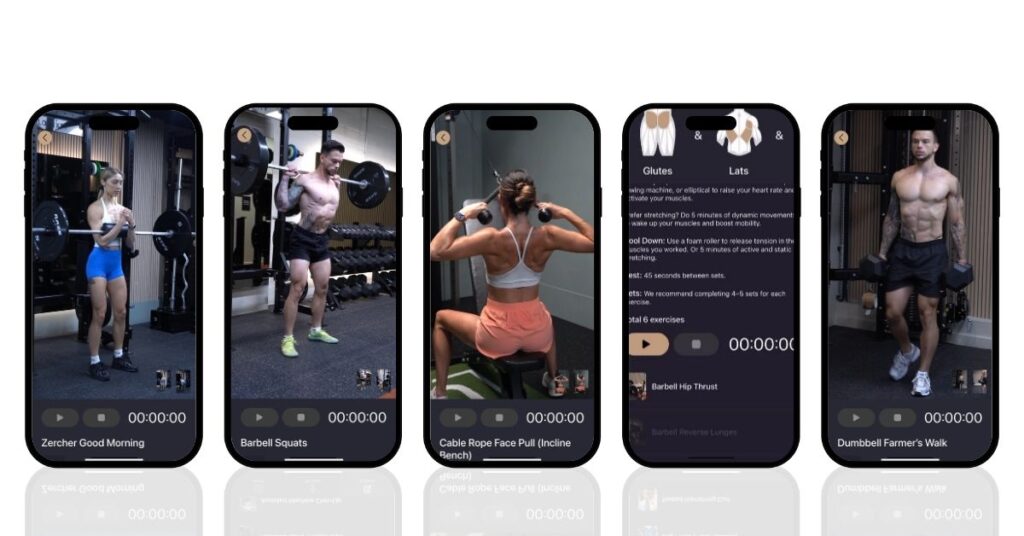
Nutrition – Fueling Fat Loss and Muscle Gain
Exercise was only half the battle. To lose 25 kg (~55 lbs) while gaining muscle, nutrition had to be on point. We didn’t do any extreme fad diets; instead, we implemented a balanced, sustainable eating plan that created a moderate calorie deficit (for fat loss) while providing plenty of protein and nutrients (for muscle building and overall health). Here’s how we approached Edward’s diet:
- Sufficient Protein: Protein is crucial for repairing and building muscle tissue, especially when in a calorie deficit. I set Edward’s protein target at around 1.8–2.0 grams of protein per kilogram of body weight. At his starting weight (~105 kg), this was roughly 180–200 g of protein a day. As his weight dropped, we adjusted absolute grams slightly but kept it high. This high protein intake helped preserve his lean muscle as he lost fat, and also kept him fuller for longer (protein is very satiating). Good protein sources in Edward’s diet included lean chicken breast, turkey, fish (like salmon and tuna), eggs, low-fat Greek yogurt, and occasional protein shakes for convenience. We also included plant proteins like beans and lentils in some meals for variety and fiber.
- Moderate Carbohydrates: Despite the bad rap carbs often get, they are essential for fueling workouts, especially high-intensity training like boxing and weightlifting. We didn’t cut carbs; rather, we focused on quality and timing. Edward ate roughly 4–5 grams of carbs per kg of body weight during the active fat-loss phase. For him that was about 400–500 g of carbs initially, mostly coming from complex, unprocessed sources. Examples: oatmeal or whole-grain cereal at breakfast for slow-releasing energy, brown rice or sweet potatoes with lunch, plenty of vegetables (broccoli, spinach, etc.), fruits like bananas or berries for vitamins and quick energy, and the occasional whole-grain pasta or quinoa. We timed a good portion of his carbs around his workouts – a bit before exercise (for energy) and in the meal after (to replenish glycogen and assist recovery). This ensured he had the fuel to train hard and the nutrients to recover, without excess carbs being stored as fat. On particularly intense boxing days, he’d have a bit more carbs; on rest days, a bit less, matching intake to activity.
- Healthy Fats: Dietary fat is important for hormone production (like testosterone, which aids muscle growth) and overall health. We maintained fat intake at roughly 0.8–1 g per kg of body weight (~80–100 g per day initially for him). The key was choosing mostly unsaturated, heart-healthy fats. Edward incorporated foods like avocados, a small handful of mixed nuts (almonds, walnuts) daily, olive oil for cooking, and fatty fish twice a week (providing omega-3 fatty acids). These fats also helped keep him satisfied. We limited saturated fats (from heavy fried foods or high-fat red meats) and completely avoided trans fats. By hitting his targets for protein, carbs, and fats, Edward was essentially following a flexible macro-based diet, eating balanced meals that fit his nutritional needs.
- Calorie Deficit: Even with healthy foods, portion control matters for weight loss. Based on Edward’s estimated maintenance calories, we aimed for about a 20% calorie deficit to lose fat at a steady pace (~0.5 kg to 1 kg per week). I prefer a moderate deficit so that the client has energy to train and doesn’t feel starved. For Edward, this meant consuming around 1800–2000 calories in the early stages (this number was adjusted downward slowly as his weight dropped and to avoid plateaus). We didn’t have him obsessively count calories forever, but we did track his intake for a few weeks initially to educate him on portion sizes. Over time, he built solid habits: a typical day might be a 500 kcal breakfast, 600 kcal lunch, 200 kcal snack, 600 kcal dinner, for example, roughly aligning with his targets. If he felt extra hungry on a given day, he’d fill up on high-volume, low-calorie foods like vegetables or a protein shake, rather than junk. And yes, we allowed the occasional treat! Strict deprivation backfires. Edward enjoyed a slice of pizza or a beer once in a while, but we practised moderation and got back on plan for the next meal.
- Hydration and Micronutrients: I also encouraged Edward to drink plenty of water (at least 2–3 litres a day), especially with his increased activity. Proper hydration aids digestion, performance, and even skin elasticity (important as he was concerned about loose skin). He also took a basic multivitamin to cover any gaps and ate a variety of fruits and veggies for fiber and vitamins/minerals. This well-rounded nutrition helped his overall health markers – during this journey, his blood pressure improved, and his doctor was thrilled with his blood work.
Overall, Edward’s nutrition approach was balanced and sustainable. We didn’t use any crash diets or eliminate entire food groups. It was more about portion control and quality. By fueling his body with the right nutrients, Edward had the energy to crush his workouts and recover well, all while steadily dropping fat. The high protein ensured that most of the weight he lost was fat, not muscle. In fact, his lean muscle mass increased as measured by body scans – meaning he did the often-elusive recomposition (losing fat while gaining muscle).
And what about that loose skin concern? Losing a large amount of weight can sometimes leave loose skin, but building muscle underneath can dramatically improve how your skin looks. In Edward’s case, as he lost fat gradually (not too rapidly) and simultaneously built muscle, his skin had time to adjust. The added muscle “filled out” his frame in a healthy way. After 12+ months, he reports that his skin is much tighter and he’s not self-conscious about it – he looks fit and firm, not deflated. Proper nutrition (with plenty of protein, vitamins, and staying hydrated) likely helped his skin elasticity too.
Results – A Transformation Story
After a year of dedication, the results spoke for themselves. Edward lost 25 kilograms of body weight, going from around 105 kg down to 80 kg. More impressively, this wasn’t just a crash diet loss; it was a body recomposition. His body fat percentage plummeted, and he built visible lean muscle across his chest, arms, back, and legs. In his “before” photo, Edward had a soft midsection and poor posture. In the “after” photo, he stands tall with a trimmed waist, noticeable muscle tone in his shoulders and arms, and even the beginnings of a six-pack. His face looks years younger, and the smile on it is priceless.
Let’s quantify some of Edward’s achievements:
- Strength Gains: When Edward began, he could barely bench press 40 kg for 5 shaky reps. By the end of the year, he confidently bench pressed 80 kg for 8 reps – double the weight, with excellent form. Similar progress was seen all around: his leg press went from 100 kg to 200 kg for reps. He struggled to do 1 proper push-up initially; now he can bang out 20+. Perhaps most rewarding for him, his back pain disappeared as his posterior chain (back and core muscles) got stronger. He can deadlift 100 kg now without issue – something he never thought possible in his mid-40s. This functional strength gain dramatically improved his daily life (like carrying groceries or lifting luggage with ease).
- Endurance and Performance: Through boxing and cardio, Edward’s stamina surged. In the first boxing session, a 1-minute round left him winded. A year later, he can do 10 rounds of high-intensity boxing with short breaks and still have energy in the tank. His resting heart rate dropped by about 10 beats per minute, indicating improved cardiovascular health. He also completed a 5 km charity run (something he wouldn’t have attempted before training) in a respectable time.
- Body Composition: Edward’s body fat percentage went from roughly 30% down to about 15%. He lost 8 inches off his waist circumference. Old clothes literally fell off him; he had to buy a new wardrobe in medium sizes instead of XXL! Yet, despite losing weight, he looks bigger and more muscular in his chest and arms due to muscle gains. Friends and family were stunned by the change – some didn’t recognise him at first glance. The often-dreaded loose skin turned out to be only a minor issue; by losing weight gradually and engaging in resistance training, his skin tightened considerably. Any remaining slight looseness is continuing to improve as he fills out with muscle.
- Health and Energy: Beyond the mirror and gym stats, Edward’s health markers improved. His blood pressure normalised, his cholesterol levels improved, and he reports sleeping better and feeling more energetic throughout the day. No more afternoon slumps or grogginess – exercise and good nutrition proved better than any caffeine fix. Mentally, he’s in a much better place too: his confidence is through the roof. He’s even taken up a new hobby (hiking with his wife and kids) because he now has the endurance and confidence to enjoy such activities.
One of the proudest moments was when Edward’s doctor took him off a medication he’d been on for blood pressure, saying, “Whatever you’re doing, keep doing it.” This was real-life changing progress.
Edward’s Take – In His Own Words
To really understand the impact, here’s a short quote from Edward reflecting on his journey:
“I feel like a new person. A year ago, I was breathless walking up stairs and intimidated by the gym. With Will’s guidance and the 12REPS app, I started from scratch and just kept at it one day at a time. The app made it almost like a game – I loved seeing my numbers go up. Boxing made cardio fun for me. Now I’ve lost 25 kg, and I’ve got muscles in places I didn’t even know I had! My energy and confidence are at an all-time high. I’m 46, but I feel stronger and fitter than I did at 30. The biggest lesson I learned is that consistency and progressive overload beat quick fixes. I’m never going back to my old habits – this is a lifestyle now.”
Reading that gives me (as a coach) immense joy. This is why I do what I do. Edward’s story shows that it’s never too late to turn your health around, and you don’t need crazy fad diets or dangerous workout routines to do it. With a sensible plan, smart tools, and the right mindset, anyone can achieve a transformation like Edward’s.
Conclusion – Key Takeaways for Your Own Journey
Edward’s transformation offers several powerful lessons for anyone looking to lose fat and build muscle, especially if you’re over 40 or starting as a relative beginner:
- Consistency Over Perfection: Edward wasn’t perfect; he had off days and the occasional indulgent meal. But he was consistent over the long haul. Hitting those workouts each week, gradually improving, adds up. The body you have today is the result of what you do most of the time, not occasionally. Find a routine you can stick with and keep showing up.
- Progressive Overload is King: Whether you’re a 45-year-old man like Edward or a 50-year-old woman, the principle of progressively challenging your muscles drives improvement. Don’t shy away from increasing the weights when things get too easy. Muscle grows when it’s forced to adapt to stress. Track your workouts (in an app or notebook) so you know exactly when to push a bit more. Small weekly improvements can lead to significant changes over time.
- Strength Training + Cardio = Best Results: You don’t have to choose one or the other. Combining resistance training (to build/shape muscle) with cardio (to burn calories and improve heart health) yields superior results. The key is balance. Do your strength work first when you’re fresh, keep cardio sessions moderate in length, and don’t overdo steady-state cardio to the point of hampering recovery. Pairing boxing or other HIIT-style cardio with a solid lifting routine can enhance fat loss and muscle gains simultaneously.
- Nutrition Matters Enormously: You can’t out-train a bad diet, especially in your 40s. Edward’s steady fat loss was primarily driven by his nutrition. A high-protein, balanced diet gave him the building blocks for muscle and the deficit for fat loss. Remember, protein is your friend (aim for ~1.5–2 g per kg bodyweight). Include plenty of whole foods – lean proteins, veggies, fruits, whole grains, healthy fats. Treats in moderation are fine, but portion control is key. And don’t crash diet – aim for a calorie intake you can sustain; slow and steady wins here.
- Age is Just a Number: Hitting 40 or 50 is not a free pass to frailty. With the right approach, you can be strong, fit, and athletic at any age. In fact, you need to exercise more than ever as you get older. Building muscle after 40 is doable (Edward is proof). It can improve joint health, metabolism, and even skin tightness, as we saw. If you’re a woman going through menopause or a man noticing age-related strength loss, lifting weights can counteract those changes. Always work within your abilities and focus on form, but know that your body will respond to training, regardless of age.
- Expert Guidance and Tools Help: Edward benefited from having a coach (me) to guide and hold him accountable, as well as from using the 12REPS app, which provided structure and tracking. If you’re not sure where to start, consider using a program or app like 12REPS that is built on proven principles. It can be like having a personal trainer in your pocket, ensuring you’re doing the right things. And if you can, working with a trainer for even a few sessions can teach you a ton (plus make workouts more fun, Edward loved our boxing mitt sessions!).
Lastly, perhaps the biggest takeaway is that Edward’s story can be your story too. His results weren’t magic; they were earned through a solid plan executed with determination and patience. And the changes he made are sustainable because he actually enjoys the new lifestyle, the workouts, the healthier meals, the new hobbies his fitness allows.
If you’re ready to start your own transformation, I’m here to help. The 12REPS app that guided Edward’s strength training is available for anyone to try. It’s a fantastic tool to kickstart your journey with tailored workouts and progress tracking. You can download the 12REPS app and start a free program to build strength and lose fat just like we did with Edward. And if you’re in London or prefer personal guidance, I offer one-on-one training (including boxing sessions) I love coaching people of all ages and backgrounds to reach their goals.

Don’t let another year pass by wishing for change; take action. Edward did, and it changed his life.
. Before you know it, you’ll be celebrating your own 25 kg lost, or your first pull-up, or simply the joy of feeling strong and healthy again. Remember, every rep counts, and you’re stronger than you think. Let’s make your transformation the next success story!

